Lormont, Gironde, Nouvelle-Aquitaine 作者: 来源: 发布时间:2021-09-25
I.Population and Area
Total Area: 7,35 km2
Population in 2017: 23 538
Population Density: 3 202 /km2
Histogram of demographic change
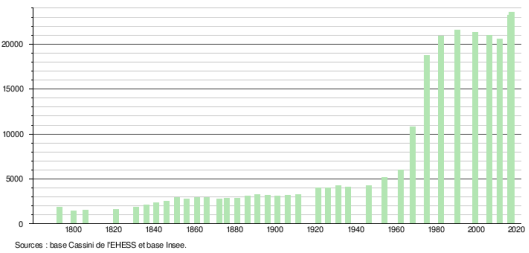
II.Natural Geography (environment and resources)
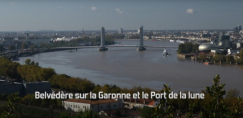
Lormont is a town in southwestern France, located in the Gironde department, in the Nouvelle-Aquitaine region.
Geography:
Former capital of the canton, Lormont is one of the twenty-eight municipalities of the metropolis of Bordeaux. With 23,538 inhabitants, it falls within the perimeter of a constantly growing Bordeaux agglomeration, at the center of the Arcachon-Bordeaux-Libourne axis, a metropolitan area with a concentration of nearly 1,250,000 inhabitants. Its inhabitants are called the Lormontais1.
The city, which developed on a ridge, on the right bank of the Garonne, owes to the strategic character of its site being chosen as a place of residence, first by the archbishops of Bordeaux, then by the kings. Dukes and Princes of Aquitaine, during the Anglo-Gascon period: it was also at Lormont Castle that Richard II, King of England and Duke of Aquitaine was born. From that time on, the town developed a port, from which smugglers commuted to Bordeaux. In the 18th century, shipyards were developed, embryos of the famous Forges and shipyards of the Gironde. Celebrated by Stendhal, the town is home to many taverns in the 19th century, where Bordeaux residents come to have fun.
The morphology of the town changed in the 1960s, with the construction of subdivisions and social housing: the population went from 5,976 inhabitants in 1962 to 10,774 inhabitants in 1968, steadily growing since then. Commercial, sports and educational infrastructures were built to respond to this influx of population, as well as business zones and several shopping centers (Quatre pavillons, Génicart, etc.)
Lormont is today a municipality in the first peri-urban ring of Bordeaux, of which it constitutes one of the northern suburbs. It relies on a discreet monumental adornment, sometimes classified (Saint-Martin church, Sainte-Catherine hermitage ...) and on the presence of the Aquitaine bridge, "emblematic monument" of the city.
Location and access:
Municipality of Entre-deux-Mers located in the urban area of Bordeaux and in its urban unit on the right bank of the Garonne 6 km north and downstream of Bordeaux, Lormont has long remained a small town in the Bordeaux agglomeration until its entry into the Urban Community of Bordeaux when it was created on January 1, 1968. It is a frequented place thanks to the various means of transport and road axes present: the gondolas and the SNCF station in the past, the bridge of Aquitaine, tram line A and the BatCub river shuttle today.
It is accessible by exits no 2 (Lormont, Carbon-Blanc, Bassens, Zone portuaire), no 3 (Vieux Lormont), no 26 (Artigues Moulinat, Yvrac, Quatre Pavillons) and no 27 (Lormont, Carbon-Blanc de la ring road (A630).
Public transport:
TBM network
The Transports Bordeaux Métropole (TBM) network serves the municipality through line A of the Bordeaux tramway, which serves the city center, but also through bus lines 7, 27, 32, 40, 64 and 67, replaced on weekends by Flexo 68, 91, 92 and 93. In the evening, in addition to line 7, the town is served by Flexo 50.
TransGironde network
Lines 201, 202 and 301 to 303 leave from the Buttinière tram station to Blaye, Saint-Ciers-sur-Gironde, Pleine-Selve, Sante-Eulalie, Izon, Libourne or Beychac-et-Caillaud.
Neighborhoods:
The city covers 735 hectares and can be divided into several large districts:
Carriet: located north of the village, near Bassens, it is surrounded by main roads. Equipped with the municipal swimming pool, new educational structures and a mixed housing in renewal, the very hilly site, offers on the heights perspectives on the Garonne and Bordeaux. Carriet is described as a “Garden City”;
Génicart: brings together the habitat of the 1970s on the "plateau". Essentially made up of buildings linked to Priority Urbanization Zones (ZUP), it is now in full urban renewal;
Le Bourg: it includes the port and the buildings in front, the old palace and includes the old houses of the "Lormont des origines" with the railway viaduct. The port is located at the mouth of the channeled Garosses and Pimpin streams. The quays that once housed the shipbuilding workshops now house the Port Authority of the Autonomous Port of Bordeaux.
Le Grand Tressan - Domaine du Manoir: located in the east of the city, this district of individual residences borders with the towns of Sainte-Eulalie, Yvrac, Artigues-près-Bordeaux and Carbon-Blanc;
Les Iris-Lissandre: located on the edge of the Garonne and Génicart, the Iris - Lissandre district includes with it: the Hermitage park with an area of 30 ha, the Iris castle and the Iris farm offering children and great moments of discovery;
La Ramade: currently under construction, this new district is already opening its doors to many residents benefiting from new housing.
Geology:
Alluvial plain built as an extension of the Entre-deux-Mers area, at the confluence of the two valleys of the Dordogne and the Garonne; this space is made up of recent estuarine sediments. Above 60 meters in altitude, the soils consist of a limestone plateau.
Lormont is located on two hills, Cap deu Tureu in the north and La Roqua in the south, which frame a narrow valley. The maximum altitude recorded at Lormont is 63 meters.
Hydrography:
The town bordered by the Garonne is crossed by two channeled streams, the Pimpin and the Garosses, forming esteys. Geothermal drilling has been carried out at Génicart, which will supply thermal water to a thermal leisure center in the extension of the Parc de l'Ermitage. Work will begin in January 2010, to build a complex of approximately 7,000 m2.
III.ECONOMY
Employment rate (%): 69.2 (2017)
Poverty rate by age group of the tax advisor(%): 28 (2017)
Average employment income (€):2 009 net per month (24 109 net per year)(2014)
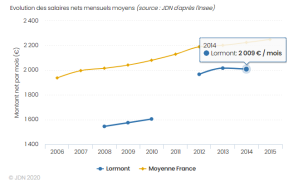
Evolution of average monthly net wages
Sources : http://www.journaldunet.com/business/salaire/lormont/ville-33249#:~:text=Les%20habitants%20de%20Lormont%20(Gironde,109%20%E2%82%AC%20nets%20par%20an.
https://www.insee.fr/fr/statistiques/2011101?geo=COM-33249#chiffre-cle-5
IV.Industrial Characterisitics
The city's economic activity revolves around three main axes:
the shopping centers: the 4 Pavillons shopping center, the Génicart shopping center and the Carriet shops;
a logistics hub based in particular on port activities with the Carriet port area and regional distribution platforms;
the industrial zones of the 4 Pavillons (26.5 ha), La Gardette (18 ha) and Lissandre (15 ha) represent nearly 59.5 hectares dedicated to businesses.
882 craft, industrial and commercial businesses are located in the city;
A thermoludic complex, called “Cascades de Garonne” is in the pipeline.
Lormont is a wine-growing municipality that is administratively and legally part of the Bordeaux vineyard, it is located in the geographical areas of the AOC Crémant de Bordeaux, Côtes-de-Bordeaux, Bordeaux-Supérieur, Première-Côtes-de-Bordeaux and Bordeaux ( AOC).
The city of Lormont, 23,796 inhabitants, offers a strategic position in terms of accessibility and reinforces its territorial influence.
It is the northern gateway to the Bordeaux agglomeration, irrigated by the high-speed line, with a network of services and tools that facilitate its integration into the local economic fabric.
At the heart of the Metropolis and the New Aquitaine region, Lormont must continue its transformation in favor of economic development around 2,400 companies, strategic players in the territory.
Metropolization
Since January 1, 2016, Bordeaux Métropole has obtained economic competence, (formerly attributed to municipalities). It conducts the economic policy of the territory in consultation with the New Aquitaine region which also has this competence over the whole of its territory.
Sources:https://www.lormont.fr/au-quotidien/economie-commerce-239.html
V.Attractions
1.The Château de Lormont
Built around 1060, the Château de Lormont, known as the Black Prince or the Archbishops, probably saw Eleanor of Aquitaine staying there, during her marriage to the King of France Louis VII. The Prince of Aquitaine said the Black Prince resided there. The archbishops of Bordeaux owned it in the fourteenth century. In 1453, negotiations for the end of the Hundred Years War are said to have taken place there. After having been successively destroyed and then rebuilt, notably in 1626 by the architect Henri Roche for Cardinal François d'Escoubleau de Sourdis then for his brother Henri d'Escoubleau de Sourdis, this castle became national property in 1789.
Now private property, the castle, after a major renovation, houses a few offices within its walls. In the park, a restaurant offers every day to enjoy the view of this monument. The castle was partially registered as an historic monument in 1925.
2.The Saint-Martin church
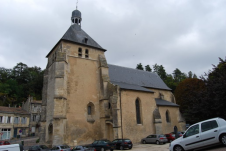
The Saint-Martin church has stood opposite the port since 1294. Consecrated to the patron saint of the parish, it owes its name to Martin de Tours. In 1451, then in ruins, it was consecrated by Archbishop Pey Berland who proposed its reconstruction at the end of the Hundred Years War. After about 20 years of renovation, it is registered today as a historical monument in 1925.
VI.History
Close to Bordeaux, Lormont has always been a strategic location and a prosperous town, a fishing port, a transit point for people and goods.
In 778, Charlemagne and Roland are said to have founded the Saint-Martin church. Around the year 1000, the Dukes of Aquitaine built the first castle of Lormont where Eleanor of Aquitaine is said to have stayed. The northern half of Lormont became in 1152 a sauveté (seigneury) of the Archbishops and would have welcomed the princes of England, while the other half asserted itself as a provost dependent on Bordeaux. In 1308, Pope Clément V resided at the castle of Lormont where Richard II of England, the son of the “Black Prince” was born in 1367. It was in Lormont that Charles VII, in July 1453, decided to set up a country house where his army will be able to start the blockade of Bordeaux. The city prospered and lived for a long time on its vineyards, fishing and the passages of travelers through the port. Despite everything, famine, pestilence and the invasion of a Spanish fleet devastated the city. In 1570, the Protestants burned the town, the church and the Hermitage.
In 1751, Intendant Tourny opened the road to Paris. Lormont then becomes the most important of the Bordeaux suburbs. The first French commercial steamboat called the “Garonne” was built in August 1818 by the Chaigneau shipyards. They then employed 1,000 workers and built 500 vessels in a century, to become the “Garonne shipyards” in 1882. After the TER train lines, in 1901, Lormont hosted the first tramway on the Place du Port allowing visitors to Bordeaux to discover the city.
In the nineteenth century, the Bordelais made it their Sunday leisure place, the place remained picturesque and open-air cafés flourished there.
In the 1960s, Lormont underwent a great transformation with the construction of the Carriet and Génicart cities, the inauguration of the Aquitaine Bridge, the opening of educational, sports, cultural and associative infrastructures. Large industries such as Ricard or Siemens set up shop and the 4 Pavillons shopping center opens its doors. The city's population doubles.
During the years 2000 and 2010, Lormont changed face. The arrival of the Bordeaux tramway (phase 1 then phase 2) is coupled with ambitious urban renewal operations. The demolition - reconstruction operations (temporarily) drop the population below 20,000 inhabitants.
Since then, many sectors are still affected by urban renewal: La Ramade (construction of new housing), Génicart (rehabilitation of the emblematic Saint-Hilaire towers and surrounding buildings, creation of semi-underground car parks topped with gardens), Bois Fleuri ( creation, to come, of a road axis punctuated with housing).
VII.Other information
The Garonne waterfalls
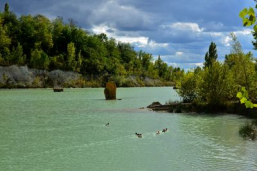
The Cascades de Garonne project took root ten years ago after the rediscovery in Lormont of a geothermal borehole that had not been exploited for 40 years and at the same time, the end of the park's development and rehabilitation program. 'Hermitage. This park, which the Town Hall acquired following the cessation of exploitation of the Ciments Français quarry and cement plant.
An off-center part was then bought by the 1% housing (Clairsienne) to carry and manage, in agreement with the Town Hall, a development project.
The town hall accompanied by the 1% housing have therefore decided to carry a project of metropolitan interest around the theme of water and well-being, on this place and using natural hot water resources. A reflection phase has been launched to lead to the definition of a water park project.
This extremely ambitious project, which will have a metropolitan, departmental and regional influence, was supported by the Société d'Economie Mixte Mont des Lauriers in which the City of Lormont is the majority shareholder accompanied by the company Domofrance (also 1% housing).
The ambition of this project is to offer the entire metropolitan population as well as the growing number of tourists in Gironde, equipment focused on well-being in a natural setting with a unique view of Bordeaux and wearing the moon.
After a first project which could not be completed due to lack of economic viability, the SEM relaunched a call for projects by keeping the fundamentals defined previously and by seeking a group of companies which would carry the investment, the exploitation, as well as the general layout.
A grouped response from Emergence, ADIM and the operating company Vert Marine won this call for projects, in particular thanks to the quality of their economic and architectural proposals.
Olivier Brochet from Brochet / Lajus / Pueyo has proposed a building perfectly integrated into the environment of the Coteaux park by subtly using the natural belvedere which will host the aqualudic center and will offer one of the most beautiful views of Bordeaux.
This center, which should open by 2020 will allow families to come and enjoy natural hot water at more than 30 ° but will also welcome more specific audiences (athletes, seniors, pregnant women, etc.), Spa, hammam, water games, relaxation ... so many pleasures open to all.
Reconstruction of the Victor Hugo retirement home
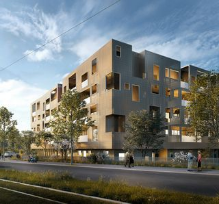
The project for a new Victor Hugo autonomous residence is in the operational phase. The first demolition works have been completed and reconstruction will begin in January 2021. A project designed by the Leibar et Seigneurin architectural firm.
The Victor Hugo residence brings together 60 self-contained T1 bis type accommodation with small gardens, organized around a fireplace, and located on the edge of Avenue de la Resistance. Built in the 1970s by the social enterprise for housing Logévie, these pavilions are aging and unsuitable for the standards governing home support for the elderly.
This new residence project is based on a close partnership between Logévie and the City of Lormont, which ultimately wishes to constitute a complete gerontological center, based on a range of accommodation and diversified and adapted services. This operation is built around the theme of “culinary gardens”.
A two-phase project
Construction of 75 housing units in independent residences (2020-2022)
Construction of an intergenerational residence (2023-2024)
Phase 1 of the project involves the construction of a main building on 5 levels housing 75 housing types T1 bis and T2. They are organized around a lively and naturally lit street which is accessed by a wide staircase and two elevators. Each apartment, largely glazed, benefits from a generous living space opening onto a private balcony. The ground floor brings together collective spaces dedicated to entertainment and catering activities. It opens onto a large square as well as an association building and a large single-storey greenhouse on the edge of Avenue de la Resistance.
The project integrates a qualitative landscape dimension. A slope planted with shrubs of various species encloses the plot. Some existing trees are preserved, supplemented by other plantations of various species. A pedestrian promenade punctuated with small alcoves allows residents to stroll. The new residence maintains its proximity to the tramway and to the Lauriers-Coteaux complex. It benefits from an underground car park with 30 spaces.
Phase 2 of the project provides for the construction of an intergenerational residence with 70 units from T2 to T5. It requires the demolition of the remaining pavilions as well as the foyer.
Operational schedule
2020: demolition of housing (pavilions n ° 1 to 26)
2021-2022: works
April 2022: visit to the sample accommodation
November 2022: relocations
2023-2024: demolition of housing (pavilions n ° 27 to 60) and construction of the intergenerational residence.
Sources: https://www.lormont.fr/mairie/grands-projets/les-cascades-de-garonne-856.html
https://www.lormont.fr/mairie/grands-projets/reconstruction-de-la-residence-pour-personnes-agees-victor-hugo-857.html
VIII.Contact information
Lormont town hall address :
rue André Dupin - BP 1
33305 Lormont cedex
Mayor : JEAN TOUZEAU
Mail: mairie@ville-lormont.fr
Phone number: +33 (0)5 57 77 63 27
Fax: 05 56 75 59 07
Website : https://www.lormont.fr/
Sources : https://www.lormont.fr/mairie/l-equipe-municipale-563.html
http://www.cartesfrance.fr/carte-france-ville/33249_Lormont.html#mairie
